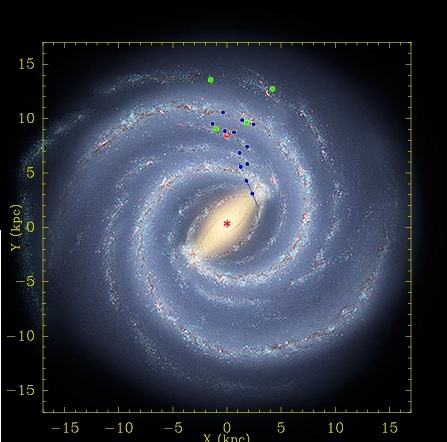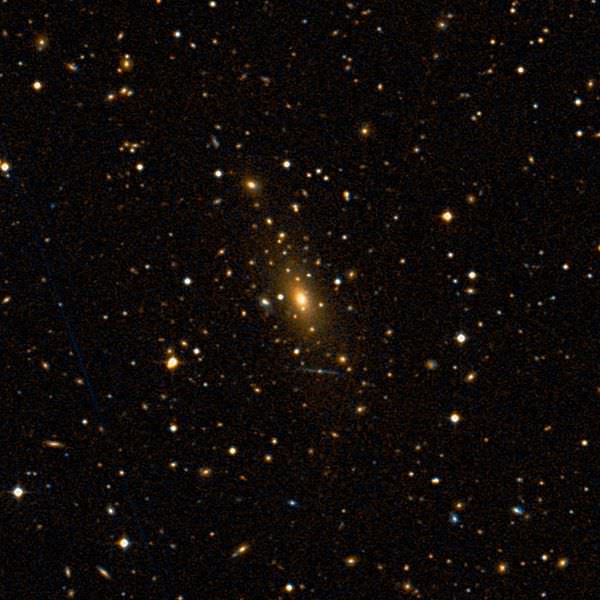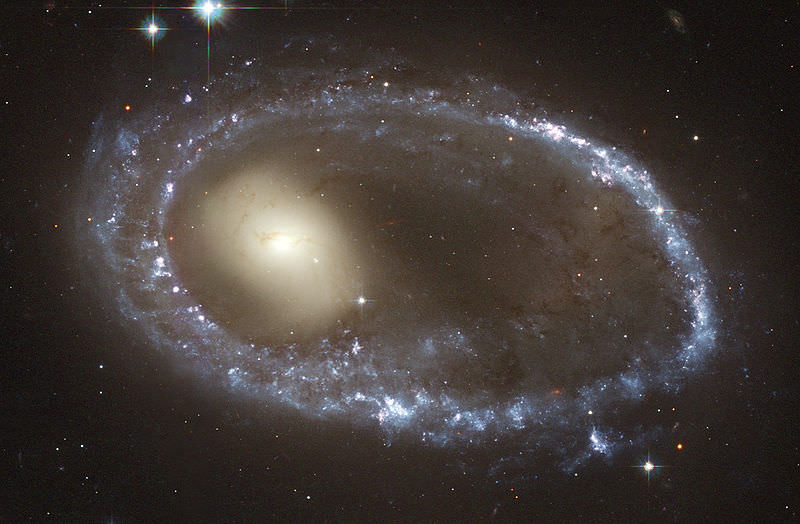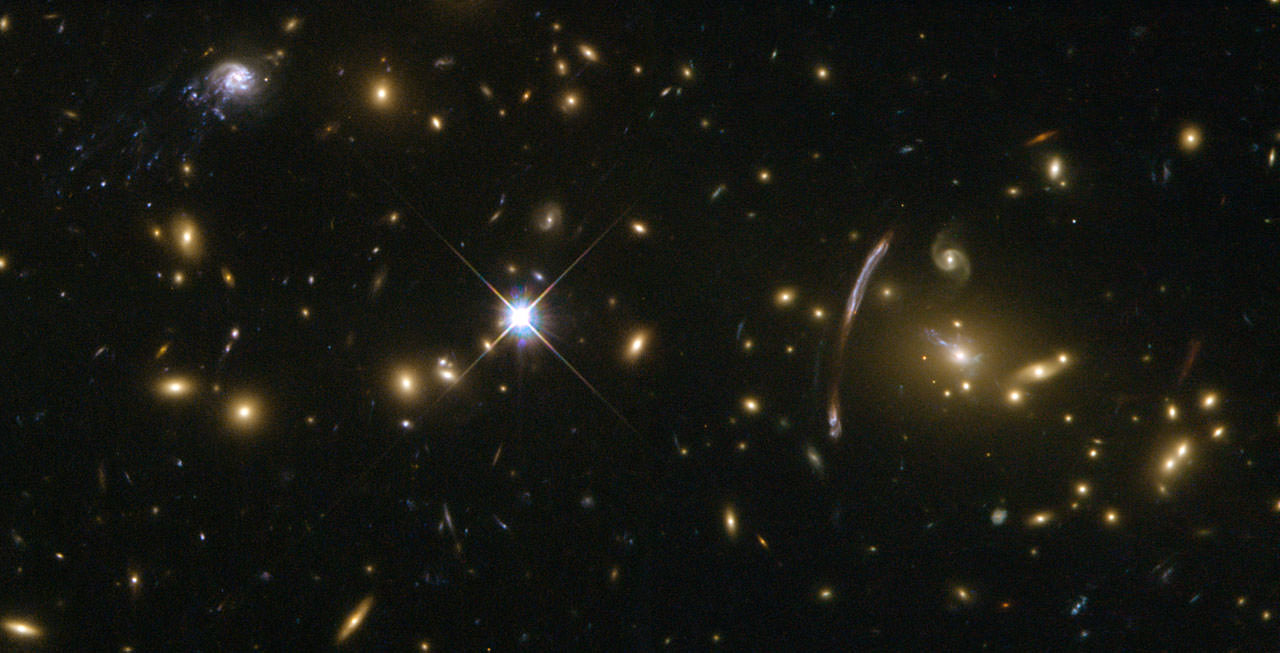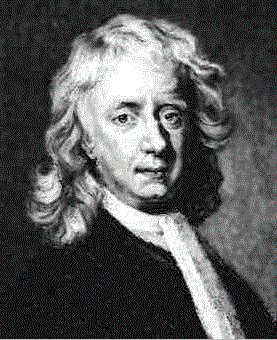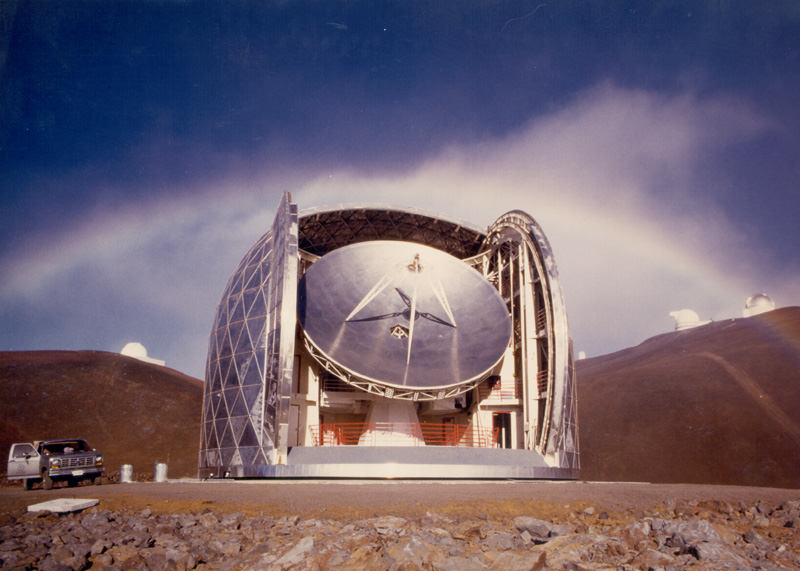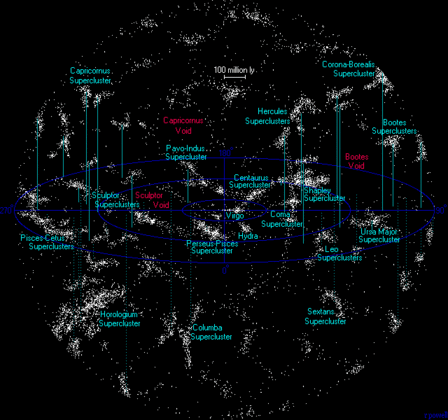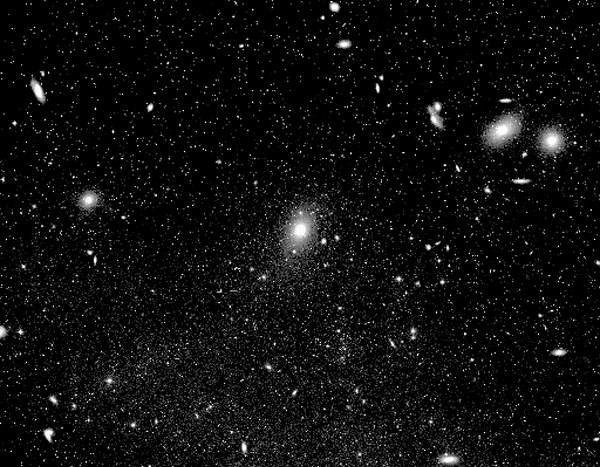Greetings, fellow SkyWatchers! Are you ready for the weekend? Then step outside and see if you’re able to spot Mercury as it begins retrograde. Celebrate the “Full Flower Moon” and Mother’s Day with some very special insights into a very special mother. Maybe you can give your mother the “String of Pearls” or perhaps just some glittering jewels of some very fine double stars? No matter what you choose to do, there’s always something new to find and explore. Follow me…
Friday, May 8, 2009 – As the skies darken this evening, scan the western horizon for Mercury. Just beginning its 2009 Mercury retrograde motion, it won’t be long before it slips back into the glare of the Sun!
Tonight the Moon will command the sky. Why not take this opportunity to have a look at a very curious feature? Scan the lunar surface just a little southeast of the gray oval of Grimaldi. The area we are looking for is called the Sirsalis Rille , and on an orb devoid of magnetic fields—it’s magnetic! Like a dry riverbed, this ancient ‘‘crack’’ on the surface runs 480 kilometers along the surface and branches off in many areas. The Sirsalis Rille is a favored area for lunar geophysics. Although no complete explanation yet exists for its magnetic properties, it’s believed the Rille could be the surface remains of a channel that once fed magma to Oceanus Procellarum. If you look carefully, you will notice that Sirsalis crosses the ejecta of the Mare Orientale impact, leading the scientists to believe it formed after the Imbrium Basin.
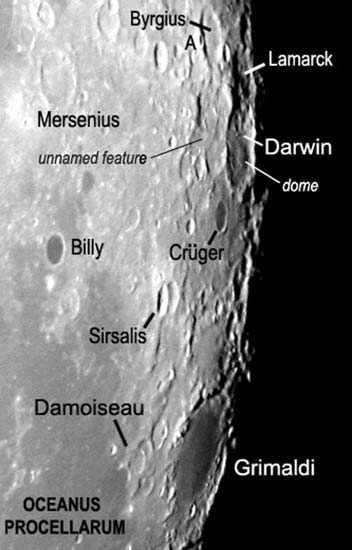
There is also a theory that the Sirsalis Rille could be a graben—an impression left when two parallel faults shift. This is in line with the theory that rising magma may have disturbed the crust. Although there’s no firm evidence of volcanic activity, solidified magma under the surface may account for Sirsalis’ magnetic properties.
Lastly, there should be some fascinating effects at sunrise over Darwin, including an unexplained ‘‘string of pearls’’ effect, a possible result of light passing through a series of sharp, steep ridges. Keep a close watch on crater Darwin if you are watching as the Sun rises over the rim. Note what you see, including exact time the effect was spotted, the date, and your location. If you are interested in contributing, send your observing reports to the Association of Lunar and Planetary Observers (ALPO).
 Saturday, May 9, 2009 – On this date in 1962, Massachusetts Institute of Technology (MIT) scientists bounced a laser beam off the Moon, which illuminated an area with a diameter of 4 miles! The ‘‘Luna See’’ project was a ruby optical laser radiating pulses of approximately 50 joules energy for half a millisecond. It was transmitted through a 1200 Cassegrain telescope and detected with a 4800 Cassegrain. It proved laser light could travel through space!
Saturday, May 9, 2009 – On this date in 1962, Massachusetts Institute of Technology (MIT) scientists bounced a laser beam off the Moon, which illuminated an area with a diameter of 4 miles! The ‘‘Luna See’’ project was a ruby optical laser radiating pulses of approximately 50 joules energy for half a millisecond. It was transmitted through a 1200 Cassegrain telescope and detected with a 4800 Cassegrain. It proved laser light could travel through space!
Tonight is the ‘‘Full Flower Moon.’’ Earth is awakening again! Agricultural literature refers to it as the ‘‘Full Corn Planting Moon,’’ or the ‘‘Milk Moon.’’ No matter what it’s named, Moonrise is majestic to watch. Participate in a Lunar Club Challenge and do some outreach work by demonstrating “Moon Illusion” to someone. We know it’s purely psychological and not physical, but the fact remains that the Moon seems larger on the horizon. Using a small coin held at arm’s length, compare it to Luna as it rises, and then again as it seems to “shrink” as it moves up! You’ve now qualified for extra credit…

Try using colored or Moon filters to look at the many surface features that throw amazing patterns across its surface. If you have none, a pair of sunglasses will suffice. Look for things you might not ordinarily notice, such as the huge streak emanating from crater Menelaus, the pattern projected from Proclus, or the bright tiny dot of little-known Pytheas north of Copernicus. It’s hard to miss the blinding beacon of Aristarchus! Check the southeastern limb, where the edge of Furnerius lights up the landscape… or how a nothing crater like Censorinus shines on the southeast shore of Tranquillitatis, while Dionysus echoes it on the southwest. Could you believe Manlius just north of central could be such a perfect ring, or that Anaxagoras would look like a northern polar cap? Although it might be tempting to curse the Moon for hiding the stars when it’s full, there is no other world out there that we can view in such detail… even if you just look with your eyes!
 Sunday, May 10, 2009 – Today we celebrate the birth of Cecilia Payne in 1900 (and another female astronomer you just might know a little more than fifty years later). Payne was the first to apply the laws of atomic physics to study the temperature and density of stars. It was a difficult time for female astronomers, and she had quite a time getting her peers to take her work seriously. (And it’s still a difficult time for female amateurs – so hang tough.) Payne proved that hydrogen and helium are the two most common elements in the universe and, with the later help of Fred Hoyle, proved that our Sun is 99% hydrogen and helium.
Sunday, May 10, 2009 – Today we celebrate the birth of Cecilia Payne in 1900 (and another female astronomer you just might know a little more than fifty years later). Payne was the first to apply the laws of atomic physics to study the temperature and density of stars. It was a difficult time for female astronomers, and she had quite a time getting her peers to take her work seriously. (And it’s still a difficult time for female amateurs – so hang tough.) Payne proved that hydrogen and helium are the two most common elements in the universe and, with the later help of Fred Hoyle, proved that our Sun is 99% hydrogen and helium.
Before the Moon rises, take a look at the constellation of Leo and its brightest stars. Our first destination is 85 light-year-distant Regulus. As the 21st brightest star in the night sky, 1.35-magnitude Alpha Leonis is a helium star about 5 times larger and 160 times brighter than our own Sun. Speeding away from us at 3.7 kilometers per second, Regulus is also a multiple system whose 8th magnitude B companion is easily seen in small telescopes. Regulus B is also a double, with a magnitude 12 dwarf companion of uncertain type. There’s an additional 13th magnitude star in this grouping, but it’s probably not associated with Regulus, since the ‘‘Little King’’ is moving toward it and will be very close to it in 800 years.
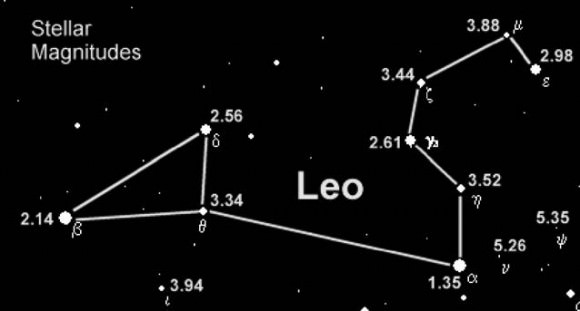
About a fist-width northeast of Regulus is 2.61-magnitude Gamma Leonis. Algieba is a very fine double star, but difficult to see at low power, since the 90 light-year-distant pair is bright and close. Separated by about twice the diameter of our own Solar System, the gap between Algieba and its companion is slowly widening! Another two finger-widths north is 3.44-magnitude Zeta. Aldhafera is about 130 light-years away and also has an optical companion—35 Leonis. Remember this binocular pair, because they’ll lead you to galaxies later! Before we leave, look east for 3.34-magnitude Theta. Mark this one in your memory, because Chort and 3.94-magnitude Iota to the south serve as markers for a galaxy hop! Last is easternmost 2.14-magnitude Beta. Denebola is the ‘‘Lion’s Tail’’ and has several faint optical companions.
Now watch the Moon… because for some areas Antares is about to be occulted!
 As we’re watching, let’s take just a moment a give thanks for our mothers and the roles they can play in our lives. Did you know Johannes Kepler’s mother, Katharina, was the one who inspired him? To rather paraphrase his story, Johannes’ father was a mercenary soldier and left him and his mother when he was a young child. His mother supported them both by working as a waitress at the family inn and put the very religious and mathematically talented young Johannes through seminary school on her own. It was his mother who took him to to watch the great comet of 1577 and an eclipse of the Moon – inspiring his love of astronomy. After he graduated, he became an assistant to Tycho Brahe, supported Copernican theory and worked with Galileo. While Kepler was working on his “Harmony of the World” his 70 year old mother was charged with witchcraft because she collected herbs, made potions and understood astrology. Isn’t that about the way it went for anyone back then who was interested in the stars? Anyhow, Kepler got a lawyer and managed to save her from the fate of the aunt who raised Katharina. She was also burned at the stake for being a witch!
As we’re watching, let’s take just a moment a give thanks for our mothers and the roles they can play in our lives. Did you know Johannes Kepler’s mother, Katharina, was the one who inspired him? To rather paraphrase his story, Johannes’ father was a mercenary soldier and left him and his mother when he was a young child. His mother supported them both by working as a waitress at the family inn and put the very religious and mathematically talented young Johannes through seminary school on her own. It was his mother who took him to to watch the great comet of 1577 and an eclipse of the Moon – inspiring his love of astronomy. After he graduated, he became an assistant to Tycho Brahe, supported Copernican theory and worked with Galileo. While Kepler was working on his “Harmony of the World” his 70 year old mother was charged with witchcraft because she collected herbs, made potions and understood astrology. Isn’t that about the way it went for anyone back then who was interested in the stars? Anyhow, Kepler got a lawyer and managed to save her from the fate of the aunt who raised Katharina. She was also burned at the stake for being a witch!
Until next week? Don’t collect any herbs unless they’re legal… And keep on reaching for the stars!
This week’s awesome images are (in order of appearance): Sirsalis Rille and region (credit—Alan Chu), Project Luna See (credit—courtesy of MIT Museum), Full Moon (credit—NASA), Cecilia Payne (historical image), Stellar magnitudes in Leo (credit—NASA) and Katharina Kepler (historical image).

